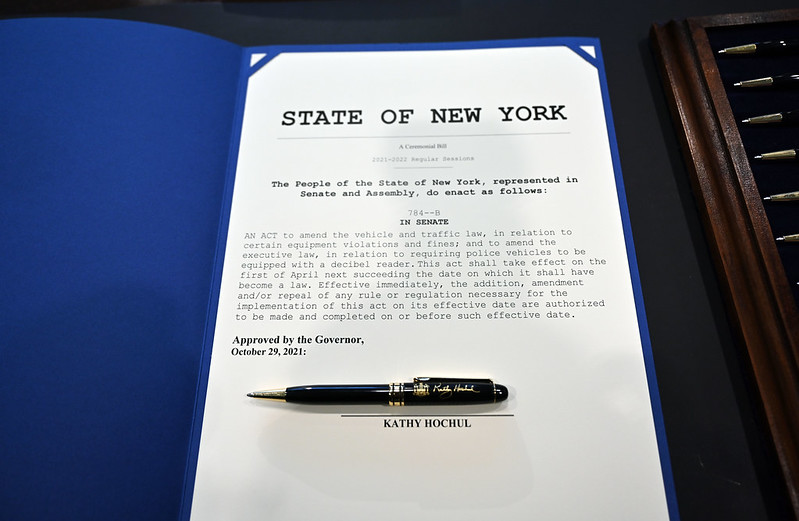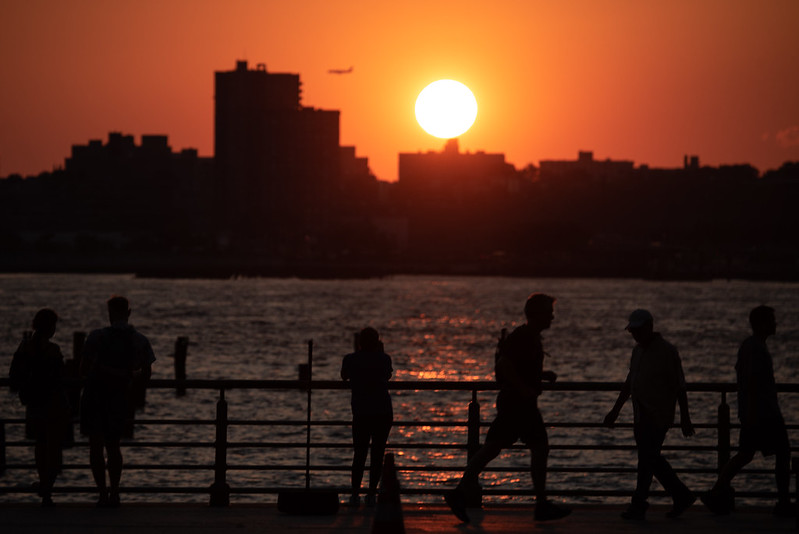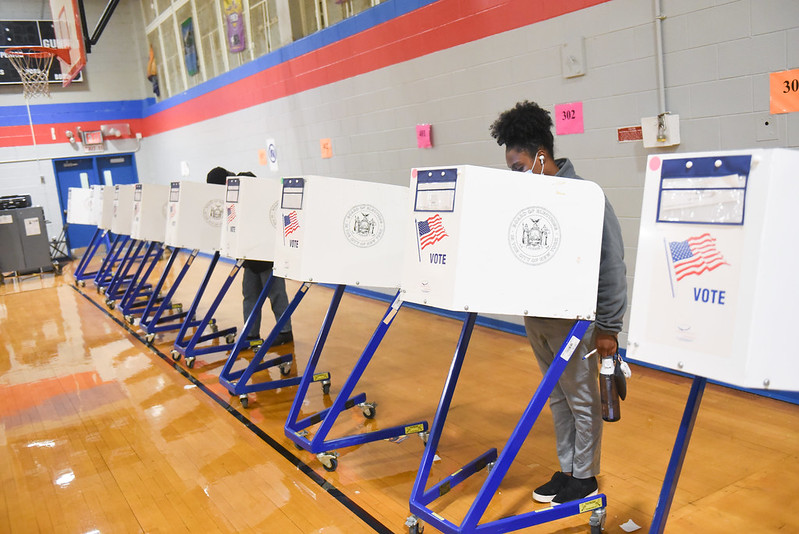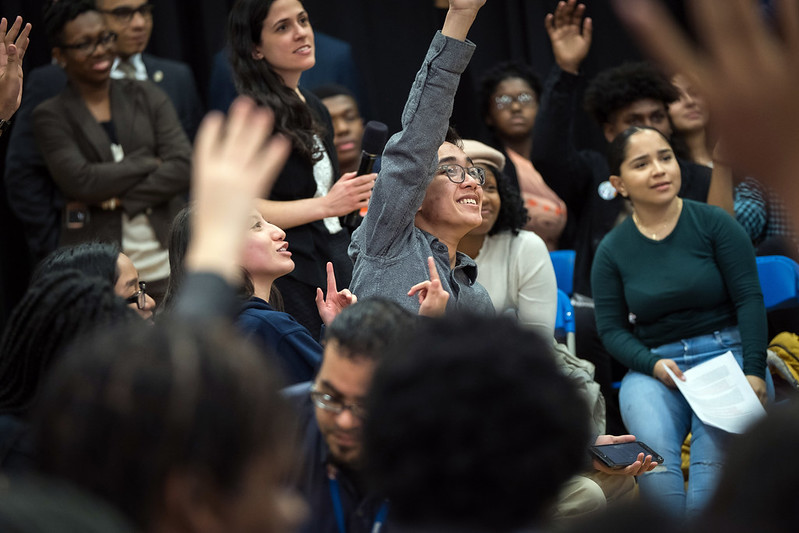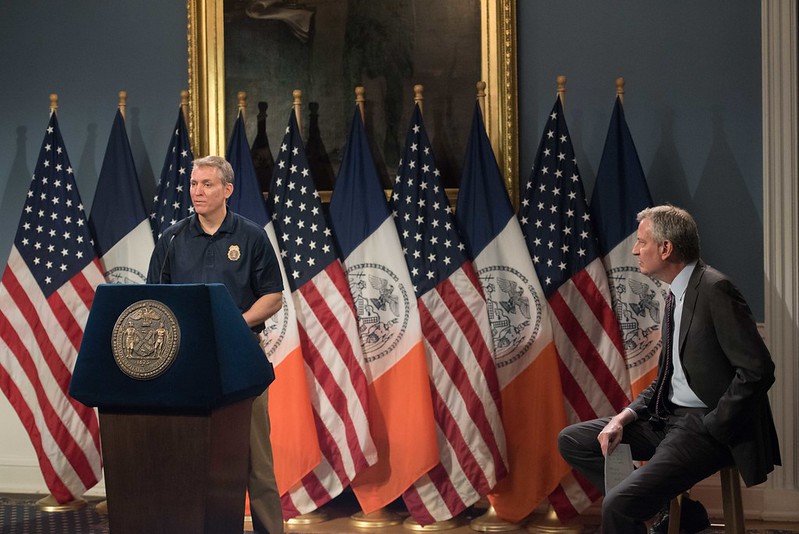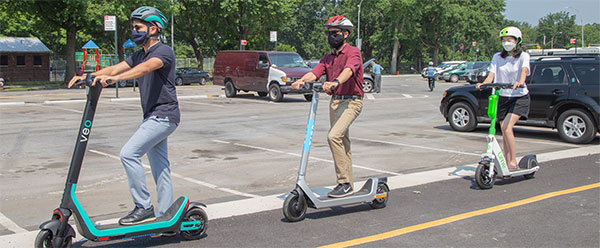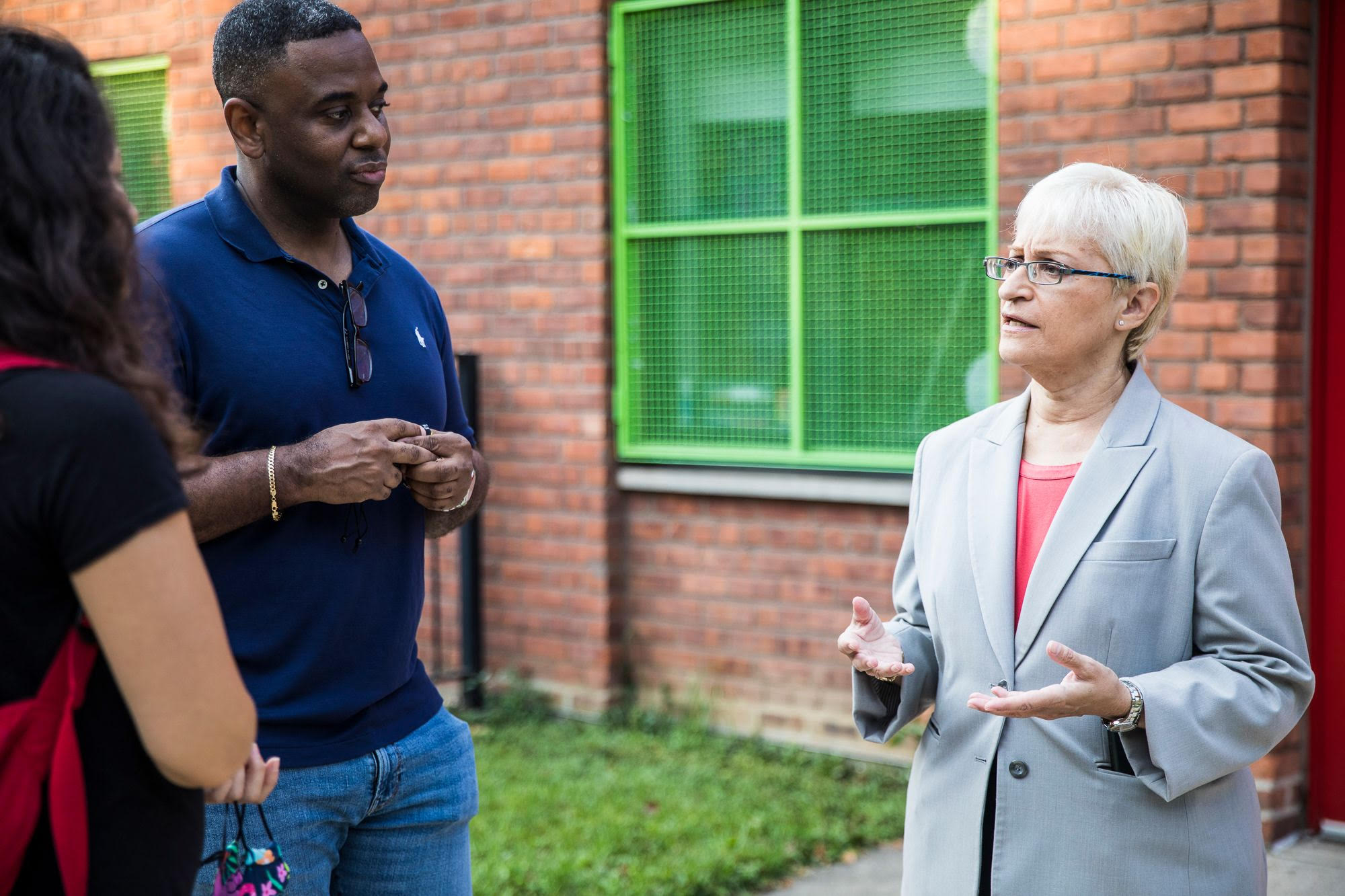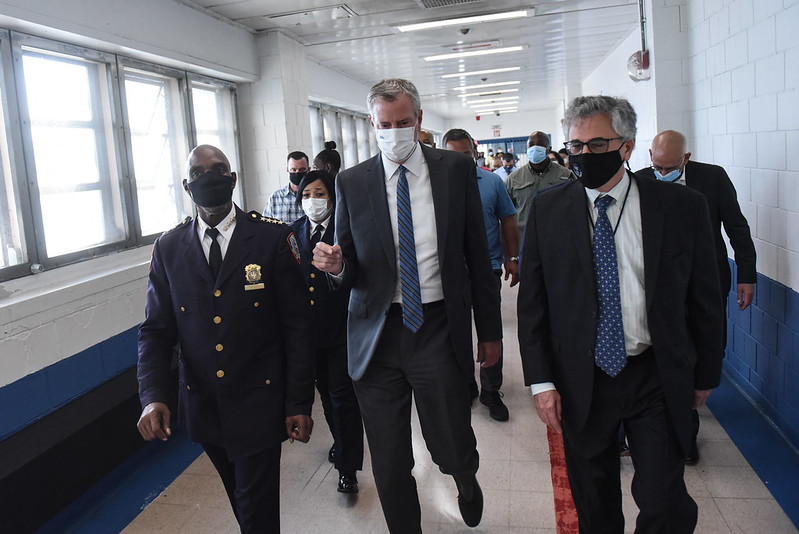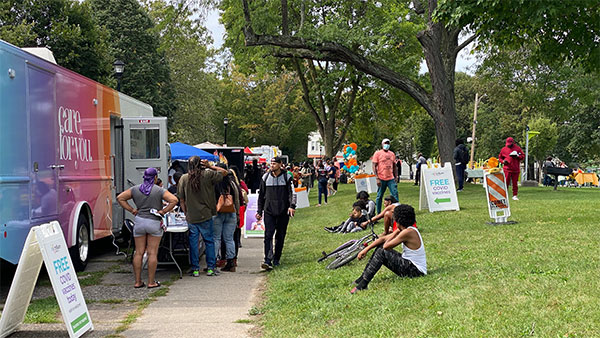
A vaccine block party in Rochester (photo: Rachel Barnhart)
On a recent Saturday in Rochester, New York, dozens of people lined up to get vaccinated against COVID-19 at a neighborhood festival. The event featured the opening of a new playground, free lunch from food trucks, and $100 gift cards for receiving a first dose of the vaccine. To celebrate the approval of child vaccines and of boosters, we can have national and state Block Party Weekends for children and their caregivers. These fun events can play a key role in reaching the one-third of Americans who remain unvaccinated.
State and local governments should scale up family-friendly block parties. To do so, governments need to disperse American Rescue Plan Act (ARPA) funding to community organizations with proven track records of distributing vaccinations. The effort must center those who face structural barriers to traditional vaccine delivery strategies, but are often willing to get vaccinated. Bringing vaccines directly to people in the community and offering incentives to get vaccinated helps support everyone.
When delta hit, it exposed the fact that Rochester, a majority Black and Latino city where one in three residents lives in poverty, had a vaccination rate below 50%. Meanwhile, affluent, white suburbs reached vaccination rates topping 70%. While many people worked hard to vaccinate city residents, it was clear we needed to try new strategies.
Organizing a block party in Lowell, Massachusetts helped Dr. Hannah Tello vaccinate up to 10 times more people than would typically show up to a community clinic. Replicating this approach in Rochester, Connected Communities added a vaccination clinic to its “Fall Extravaganza” celebrating the opening of a new adventure course for children. Connected Communities lined up food trucks to serve free lunches, ran ads on the top city radio station, and placed lawn signs around the neighborhood. The total budget was about $9,000, funded through nonprofit grants.
Community clinics had been vaccinating a dozen or so people at a time, but the Fall Extravaganza vaccinated 76 people in three hours, 74 of them first doses. People arrived by car, bike and foot. Seniors had questions about how the vaccine interacts with their medication. A few people expressed fear of needles. Many said the $100 incentive got their attention and encouraged them to show up and get their questions answered. People said they heard about the festival from the lawn signs and radio ads, not from the internet. Everyone enjoyed food and music after getting vaccinated.
The Fall Extravaganza hit on the right formula: $100 incentives, marketing, fun, and accessibility. Community groups that are most familiar with the people they serve should be able to readily access ARPA dollars to put on block parties and festivals that feature vaccination clinics. Not only do these events provide life-saving vaccines, they build community and offer healthy and safe activities. Despite the proven success, too many localities in New York are relying on failed approaches to vaccination.
Governments should make $100 incentives available in under-vaccinated communities. Though President Joe Biden encouraged using ARPA funds for $100 vaccination incentives back in July, many state and local governments were skeptical. Rochester area leaders instead used the United Way to privately fund $100 incentives over a two-week period in September, which ensured their availability at the Fall Extravaganza. The incentives worked so well to increase vaccine uptake, the benefit will now go through November 23, this time using federal funding.
In contrast, New York City acted quickly on $100 incentives, vaccinating 80,000 people in the first few weeks the incentive was offered back in August. New York City continues to offer $100 vaccination incentives today. But even incentives are not enough, as the city continues to see disparities in vaccine uptake. The block party model further breaks down barriers to vaccination.
We’ve heard objections to “paying people to do the right thing.” But poor communities -- rural and urban -- have been let down in many ways by our government, which has largely failed to protect them from covid. Offering people money and providing block parties won’t fix the damage that has been done, but it will improve and save lives. The more people that are vaccinated, the safer we all become.
Public health and joy go hand in hand. As we head into winter in New York, covid will certainly come for those who remain unprotected. They deserve our best efforts to reach them quickly — and our thank you.
***
Dr. Julia Raifman is an assistant professor at Boston University School of Public Health. Rachel Barnhart is a Monroe County Legislator in Rochester. On Twitter @JuliaRaifman and @RachBarnhart.
***
Have an op-ed idea or submission for Gotham Gazette? Email This email address is being protected from spambots. You need JavaScript enabled to view it.

